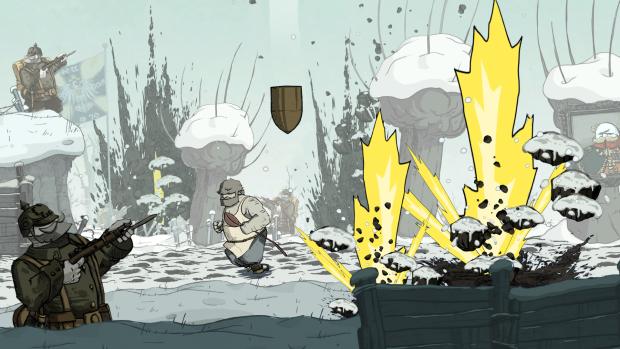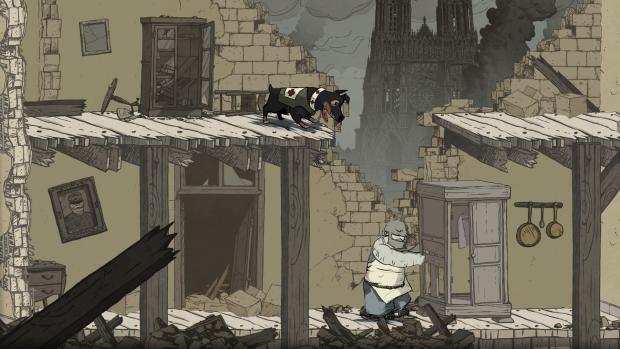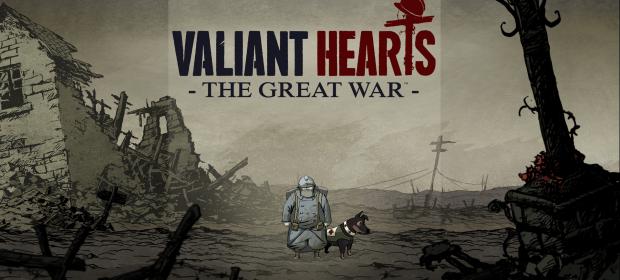The UbiArt framework has won widespread acclaim for its use in Rayman Origins and, more recently, Rayman Legends. But for some time now, gamers and critics alike have been asking the question: Wouldn’t UbiArt be great if used for other, non-Rayman titles? At the Ubisoft Digital Days event this week, Ubisoft came out with two brand new UbiArt IPs and a definitive answer – yes, yes it would.
One of those brand new titles is also looking to defy the conventions of the war-game genre. Firstly, Ubisoft Montpellier have opted to tackle the far-less fashionable topic – in gaming terms at least – of the First World War. It has always seemed a more difficult conflict to translate into a game than the Second World War. But more importantly than that, the development team have avoided the all-too common wartime shooter genre, or real-time strategy, and Valiant Hearts: The Great War is actually a puzzle-based Adventure Game. It was proposed that the best way to tackle the subject of death was through a story-driven, personal game.

The title is looking to take a more personal and emotional approach to the subject of war, with the game featuring five playable characters hailing from different corners of the conflict, united by a quest to find true love. Separated by war, two star-crossed lovers are aided by both friends and strangers – and most importantly one particular dog who links all of the stories and helps both the player and the characters as you go through the game. Gamers will get to live through the whole four years of the war, following the changes of the seasons as they go – with the different stories eventually overlapping and joining up.
On the surface, the game is what the development team describe as a living comic book. Characters walk like cardboard cut-outs, and action scenes are punctuated by picture-in-picture comic panels. The artistic style maintains a cartoon-like feel, in spite of the dire nature of the subject matter. This is down to the fact that – as explained by Adrian Lacey of Ubisoft Montpellier – humour can be found in any situation, even war. Also, this simplistic style allows the team to avoid the use of language, and simply make use of the exaggerated expressions and body language of the cartoon sprites.
The game looks really impressive, and through the use of UbiArt, nothing has been lost as artwork has been transferred from the canvas into the game, as it were. The design manages to capture the horror and bleakness of wartime, but gives it a lightness so that it won’t become over-powering. The atmosphere and mood is further heightened by the context-specific music, which is intended to change as you go along, creating emotional peaks and troughs.
The gameplay itself is somewhat akin to that found in The Cave, where action takes place in a side-scrolling environment and we have relatively mute protagonists. Actions in game are carried out through simple button prompts, such as pulling a lever or turning a crank. The Dog can also help, barking directions and unearthing hidden objects, or by being sent to retrieve items from otherwise inaccessible areas. The majority of the game will consist of puzzle sections such as this, but by having five different characters we can see different points of view and styles. For instance, the American volunteer Legionnaire Freddie is more of a fighter, and can use his fists to knock out enemies, or throw grenades and other objects at German troops.
Interestingly, we saw throwing arcs for explosives and items thrown to distract your enemies being performed with the touchpad on the DualShock 4 controller, and we were also told that players might be able to command certain in-game actions with Kinect – so there have definitely been a few platform-specific alterations taken into account. Kinect was originally intended to be used as a control method for the Dog in-game, but this was removed at some point in production, although some Kinect controls are still possible.

What is interesting about the development of the game, though, is that whilst it has been structured from five points of view, and split up into chapters as such, Ubisoft are yet to decide whether this will be an episodic title or a one-off release. The team wrote the game so that it could be easily split up and distributed in two and a half or three hour chunks, but eventually it comes down to a business decision. If players want to buy the game in chunks, then that is how it will be released, if not, it will become one big game. The market forces at the time of release will yet dictate the final form of the game.
Valiant Hearts: The Great War is planned for release in early 2014 on Xbox One, PlayStation 4 and PC – although Wii U and current generation versions have not been ruled out. The game is shaping up very nicely, and it is exciting that a developer is willing to take a risk with this type of game and subject matter. The release date for the game can’t come around soon enough.
[nggallery id=1609]






